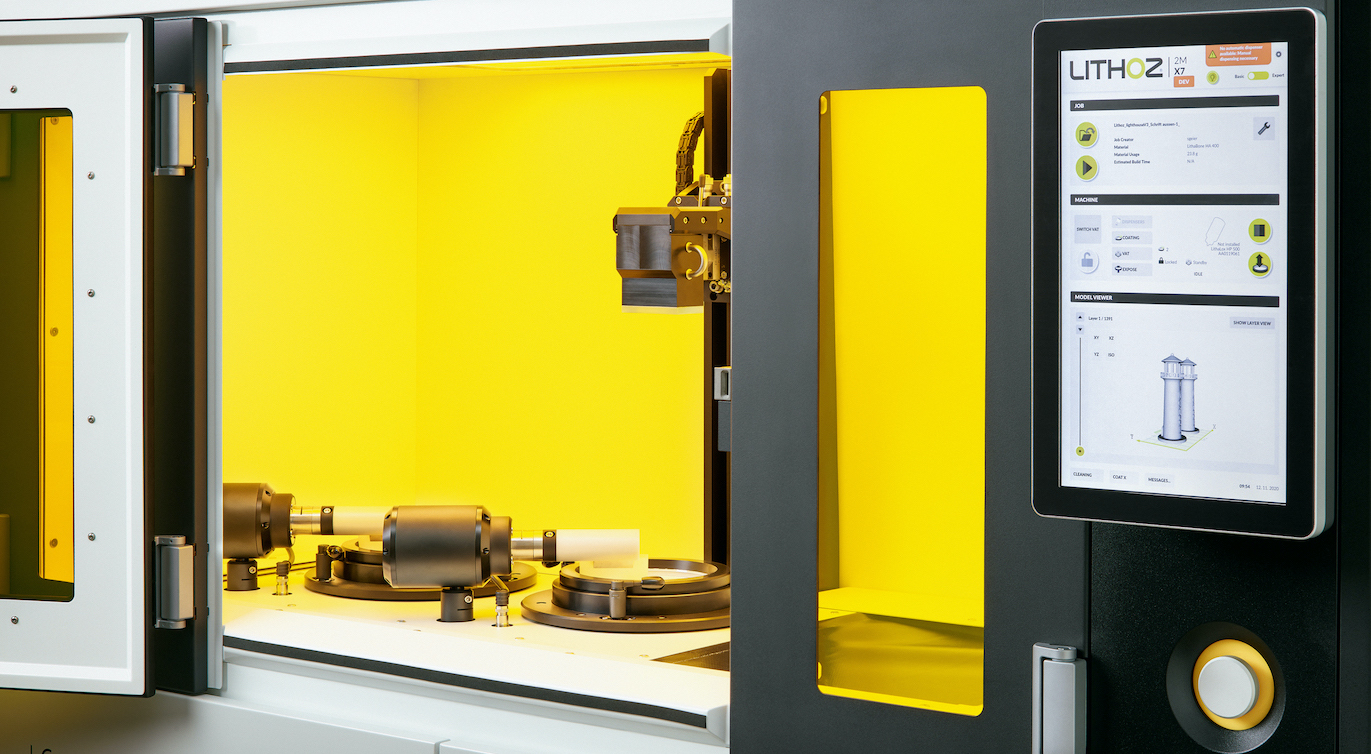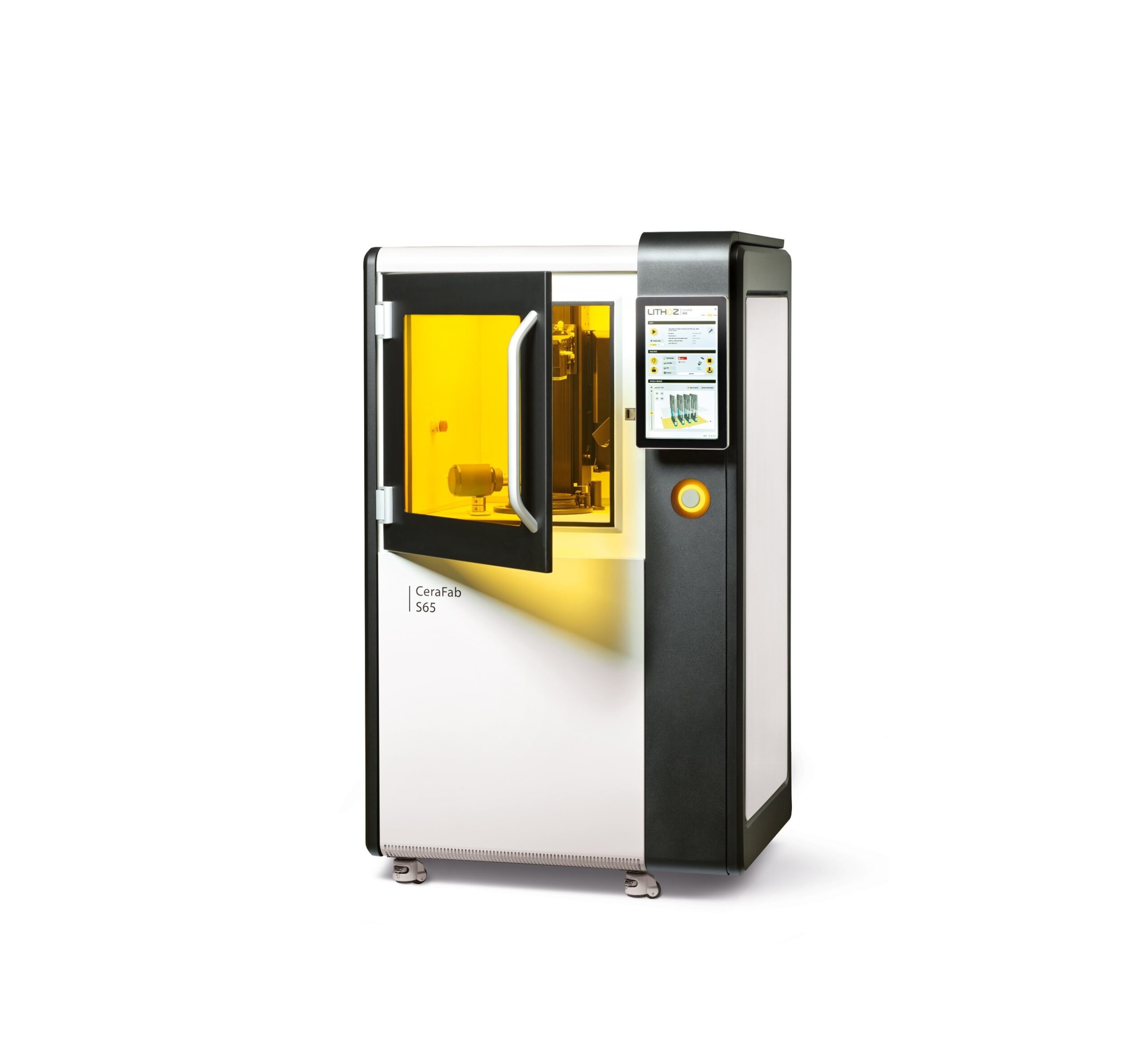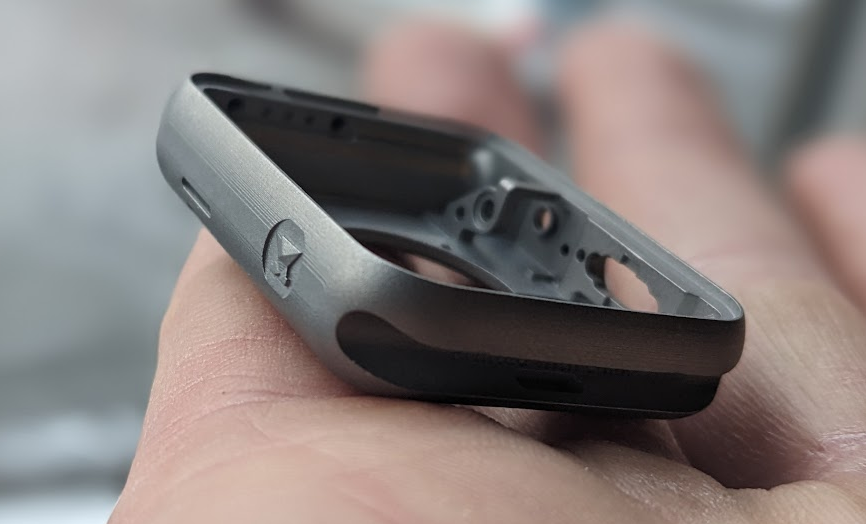Growth numbers in the startup world can often be indicators of major developments. A recent update from German ceramic 3D printing expert Lithoz has us wondering if it is gearing up for an initial public offering (IPO). The company revealed a 30% increase in printer sales and almost doubled material production in 2023, leading to speculation about the possibility of Lithoz stepping onto the public market.
While it’s important to recognize that sharing growth data doesn’t always and automatically point to an IPO, it is undeniably one significant reason for this disclosure. Others include attracting investors and top talent, boosting market presence, building partnerships, or even preparing for future business strategies, like drawing potential acquisition offers from larger companies.
 Image courtesy of Lithoz.
Image courtesy of Lithoz.This growth pattern followed by an IPO isn’t new in the tech and manufacturing world. Take Desktop Metal and Markforged, for example. Both in the 3D printing industry, these companies shared impressive growth numbers before going public. Desktop Metal (NYSE: DM) went public in 2020 through a special purpose acquisition company (SPAC) merger. Similarly, Markforged (NYSE: MKFG) joined the public market in 2021 via a SPAC. These examples from the same industry could suggest that Lithoz might be thinking about following a similar route.
Looking beyond the 3D printing sphere, this trend continues. Twitter (Now X), before its 2013 IPO, released growth figures showcasing user base and revenue increases. While Snap, known for its popular app Snapchat, went public in 2017 after revealing growth in user engagement levels. Palantir Technologies, a data analytics firm, and DoorDash, a food delivery service, also shared growth data before their respective IPOs in 2020. These examples represent a broader trend where startups, bolstered by solid growth, transition into public entities.
IPO Buzz
For Lithoz, the timing might just be right. The company’s focus on mass production, its innovative “Ceramic AM Factory,” and the expanding applications of 3D printing in various industries position it favorably in a growing market. Adding to this, 2023 marked a record year for Lithoz, with a 30% increase in printer sales and nearly double the material production from the previous year. This growth is largely driven by serial production, appealing particularly to partners operating multiple Lithoz machines. The company’s strategy of providing “all from one source” technical solutions for ceramic 3D printing also plays a crucial role in this success.
Lithoz’s case is particularly interesting. Already a market leader, the company has seen a surge in its lithography-based ceramic manufacturing (LCM) 3D printing systems. This technology offers high precision and quality, which is key in industries like aerospace, medical, and electronics. What’s more, Lithoz’s focus on scaling up mass production through its “Ceramic AM Factory” initiative is also noteworthy. This concept revolves around creating a streamlined, efficient production process for 3D printed ceramic parts, bridging the gap between prototyping and full-scale manufacturing.
 Lithoz CeraFab S65. Image courtesy of Lithoz.
Lithoz CeraFab S65. Image courtesy of Lithoz.“By establishing these interconnected machine parks, Lithoz is driving the growth of serial production in ceramic 3D printing,” said Lithoz CEO Johannes Homa. “We’re working consistently with our customers to scale up to mass production. With one of our partners now producing well over one million parts per year, it’s fantastic to see all the effort paying off!”
With the industry’s upward trajectory, an IPO could provide Lithoz with the capital needed to accelerate its expansion and solidify its market leadership. Nevertheless, without any official announcement of an IPO, we can only speculate. Going public through an IPO is a significant move that involves regulatory, financial, and strategic considerations. Not every startup chooses this path; some may seek alternatives like acquisitions, more private funding rounds, or even remaining private.
Bold Strategies
As Lithoz continues to make strides in ceramic 3D printing, its spin-off Incus, in collaboration with Element22, has also made waves in a related area. They have achieved a significant breakthrough in lithography-based metal manufacturing (LMM). Together, they produced personalized Smart Watch Housings using Titanium6Al4V (Ti64), a material known for its high tensile strength and biocompatibility. The process developed by Incus and Element22 involves a unique feedstock and a specialized sintering method, leading to parts with superior mechanical properties that exceed medical implant standards. The move showcases the technological headway that LMM technology brings to the electronics and smart wearables industries, particularly in the realm of mass customization or personalization of gadgets.
In particular, Incus’s new HammerPro40 mass production unit plays a crucial role in this advance. Its ability to print up to 16 watch cases in less than 2.5 hours significantly reduces production times and costs.
Incus CEO Gerald Mitteramskogler remarks, “The HammerPro40 demonstrates our ability to match or even surpass the production economics of classical milling centers. Our LMM technology has proven its ability to match the intended size and function without the need for extensive surface finishing or machining. With a fully customized smartwatch housing, we can achieve a competitive cost structure compared to traditional manufacturing technologies, especially when designs can no longer be realized with MIM or CNC.”
 Sintered Titanium Smart Watch Housing before surface modification. Image courtesy of Incus.
Sintered Titanium Smart Watch Housing before surface modification. Image courtesy of Incus.These developments indicate a growing adoption of LMM for high-volume, highly customized consumer goods, showcasing the evolving landscape of additive manufacturing. Similarly, while Lithoz’s recent growth numbers are impressive, signaling a company successfully scaling up, the question of an IPO remains open. If Lithoz decides to venture into the public market, it will follow the path of several predecessors who have found success in the tech and manufacturing sectors. As this sector grows and diversifies, it will be interesting to see how Lithoz could capitalize on its current achievements and navigate potential opportunities, including a possible IPO.
Subscribe to Our Email Newsletter
Stay up-to-date on all the latest news from the 3D printing industry and receive information and offers from third party vendors.
You May Also Like
3D Printed Heat Spreader Could Improve Efficiency of Electronics
The low-hanging fruit for decarbonization has long been improving the efficiency of existing systems, hence the justification for LED lights and ENERGY STAR certified appliances. While such minor moves are...
3D Printing News Unpeeled: Marine Gearboxes, 3D Printed Motors and $1.7 Million in Seed Funding
UK based Equipmake just released their Ampere-220 e-axle system. The system, which is meant for high performance electric cars, was similar to one released on the Ariel HIPERCAR. It has...
CEAD Unveils 36-Meter-Long 3D Printer for Abu Dhabi’s Al Seer Marine
CEAD, a Dutch original equipment manufacturer dedicated to large-format 3D printers, has unveiled what it claims to be the world’s largest robotic arm-based 3D printer. At 36 meters long and...
3D Printed Biocomposites Could Help Reduce Marine Plastic Pollution
Concerns about the impact of plastic litter and microplastics in the oceans are at the forefront of environmental study. For decades, the marine environment has suffered from the degradation of...




































